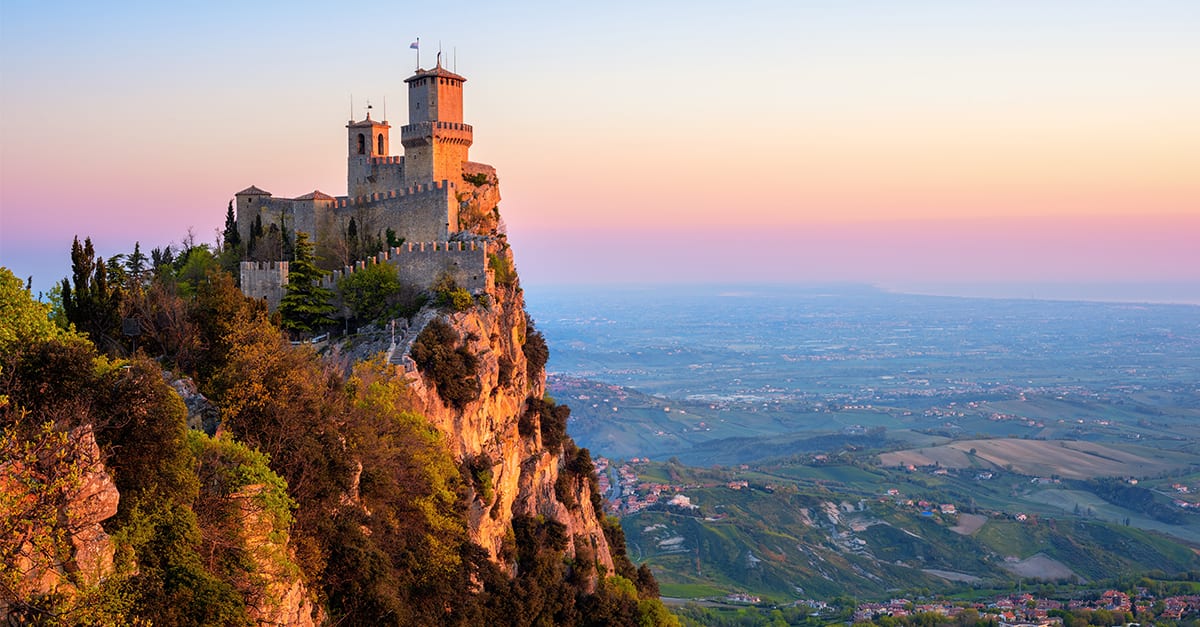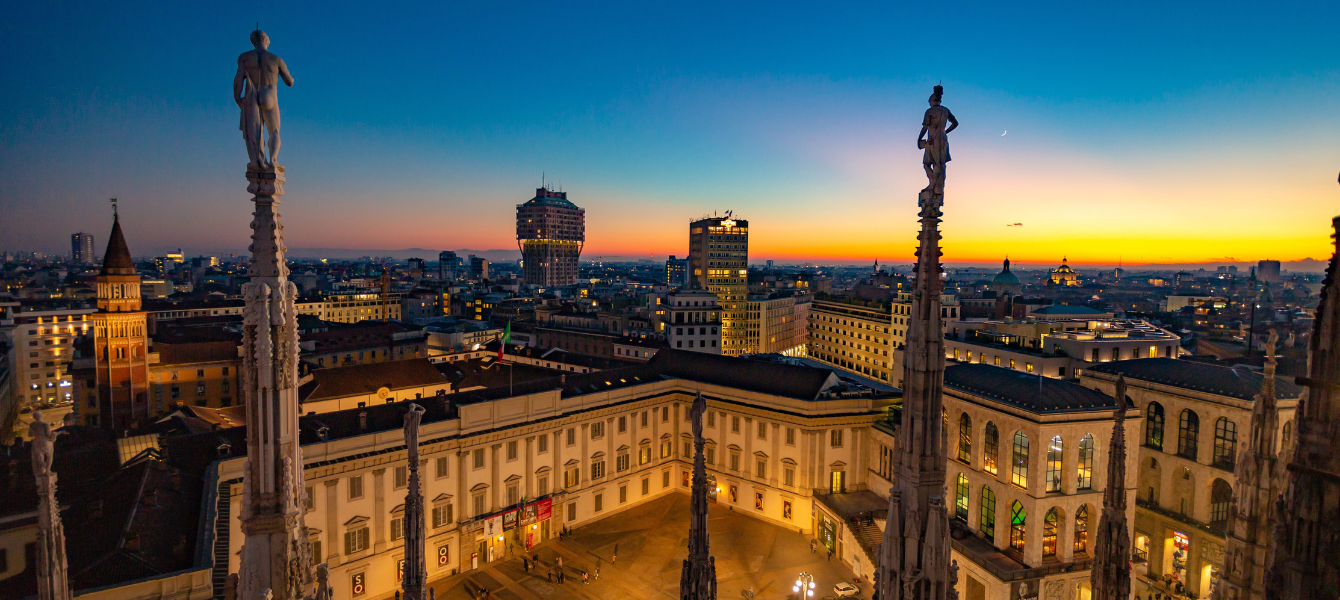July 29, 2019/in Europe, Nature
Ever wondered what the tiniest country in Europe is? We’ve got you covered! Usually, countries like France, Germany, and the United Kingdom get all the glory, but even the least sizable countries have something big to offer. So if you find yourself asking questions like “What are the European countries with the smallest land area?”, you’re in the right place.
Note: Make sure to double-check COVID 19 precautions, protocols, and operating hours before you visit any of these sites.
The 10 Smallest Countries in Europe
There are 6 microstates in Europe: Andorra, Liechtenstein, Malta, Monaco, San Marino, and Vatican City. They are the six smallest sovereign states in Europe, having a very small population and tiny land area. In fact, the Vatican City is so small that you can easily walk around the country.
Aside from these 6 microstates, the list of the smallest countries in Europe also includes Luxembourg, Cyprus, Kosovo, and Montenegro, which are also tiny in land area.
But before you try locating these countries on the map and choose which one you’ll visit first, read further and find out what the tiniest countries in Europe have to offer. Andorra and Liechtenstein sit in the mountains in the heart of Europe, while Monaco and Malta enjoy the Medditarean beaches.
1. Vatican City
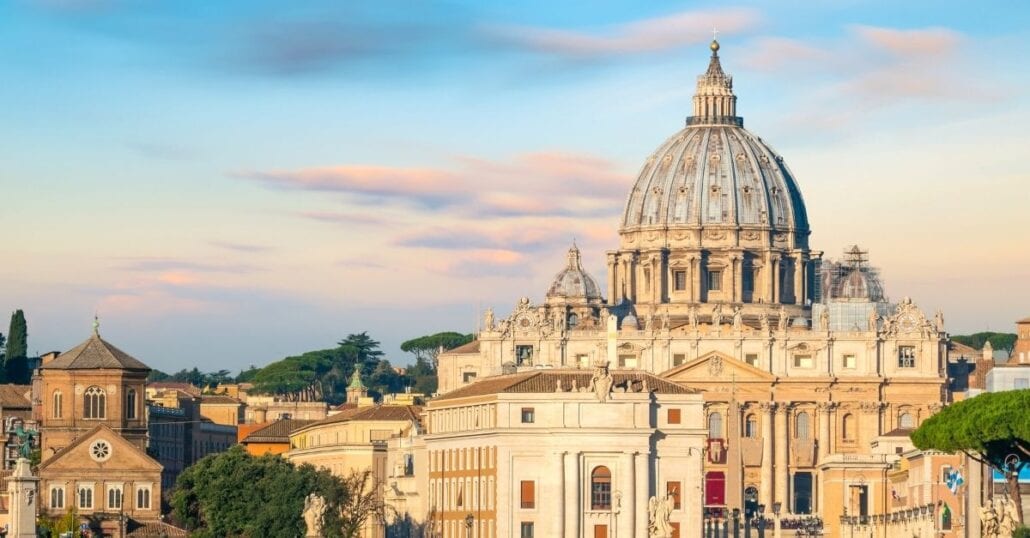
The Vatican City State is considered the smallest country in Europe. With a tiny area of only 0.17 sq mi, this tiny city-state is located in the centre of Rome, which is the capital city of Italy. Ruled directly by the Pope of the Catholic Church, the Vatican City is one of the papal states that once constituted medieval Italy. After its unification in the 19th century, the Vatican City formally became part of the Kingdom of Italy, although still politically ruled by the Pope. The Vatican is enclosed entirely by Rome, and it has a population of 825.
Even though the Vatican City is the smallest country in Europe, it offers a multitude of things to see and do. Rich in history and cultural heritage, the Vatican is almost a mandatory day trip for those who are in Rome. The Vatican is completed encircled by Rome, and both places are located within a driving distance of 7 kilometres from each other.
Once in the Vatican City, make sure to visit Saint Peter’s Basilica, a stunning Renaissance-style church, which is a major pilgrimage site, the Vatican Museum and, of course, the Sistine Chapel.
When to go to Vatican City? Rome and the Vatican are top destinations all year round, but if you want to avoid overcrowded sights, try going between October to April. A good tip is also to visit the Vatican on a Tuesday or a Thursday, during the afternoon. Make sure to allocate at least 4 hours for your visit.
What to do in Vatican City for free? Visit St. Peter’s Basilica and walk around St. Peter’s Square for free. Attractions like the Vatican Museums, the Sistine Chapel, and the St. Peter’s Dome are all paid.
2. Monaco
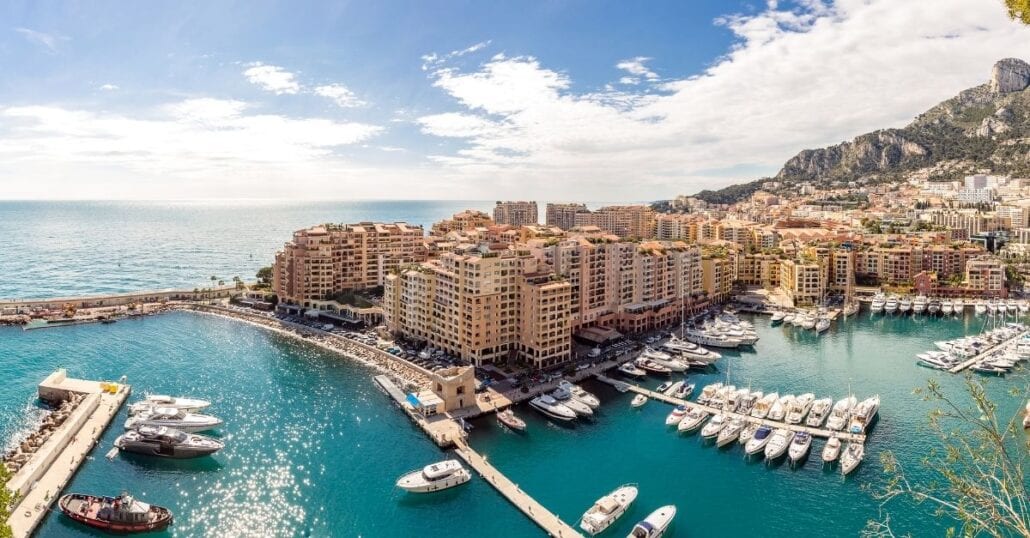
With a territory of 0.78 sq mi, the Principality of Monaco comes is the second smallest country in Europe. Not only does this tiny country has the highest population density in Europe (16,403 people per sq km), but it also has the lowest unemployment rate in the world, at nearly zero per cent! Monaco is the third country with respect to the European Union and the official language of this sovereign city-state is French, and it’s spoken by 50% of the population. 17% speak Ligurian, an Italian dialect, and 15% speak an Occitan dialect.
Despite its tiny size, this small country boasts one of the world’s chicest beaches – a slice of the Côte d’Azur, between Nice and the Italian border. Tourism, by the way, is a major economic driver of Monaco’s economy, and the country has a reputation for being the playground for the rich and famous thanks to its casinos, such as the Monte Carlo Casino, luxury resorts and pristine beaches.
Monaco-Ville it’s the capital and oldest district of Monaco, and you can learn more about the country by watching the famous 2014 Hollywood production, “Grace of Monaco”, directed by Olivier Dahan and starring Nicole Kidman.
When to go to Monaco? April and October are the best months; the room rates are reduced and the weather is just spot-on.
What to do in Monaco for free? Visit the legendary Monte Carlo Casino and walk in the Saint-Martin gardens.
3. San Marino
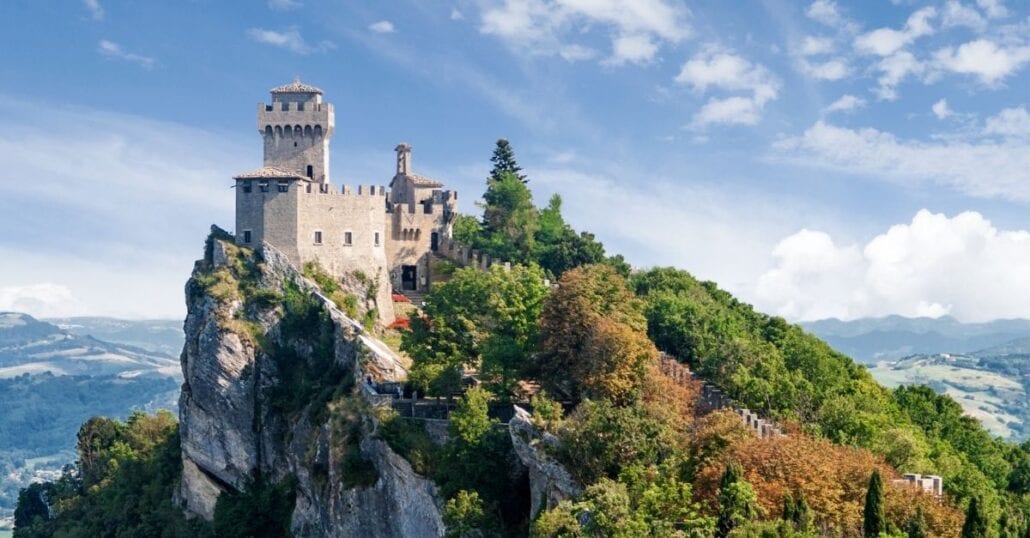
The Republic of San Marino comes in third by area in the list of the smallest countries in Europe. Located in the Valley of the Apennines and surrounded by Italy, this independent state has only 23.5 sq mi and a population of 30,000. Another curious fact is the country is the oldest surviving sovereign state and constitutional republic in the world. This European country was founded in 301 A.D. and is the last survivor of the self-governing Italian communes from the Middle Ages.
Considered a true hidden gem in Europe, the country has a Unesco-listed capital named Cittá de San Marino, which sits on the slopes of Monte Titano. The capital city holds many medieval and narrow cobblestone streets, aside from being home to three historic towers, which are The Towers of San Marino, built to represent the independence of the country.
When to go to San Marino? Visit it in September and go to the Feast of San Marino (September 3, 2019). You can walk the mountain terrains to spot wild rabbits, hedgehogs, and other animals.
What to do in San Marino for free? Hiking is for free and a highly recommended activity, after all, this mountainous European country has 78 routes plenty of options for outdoor lovers.
4. Liechtenstein
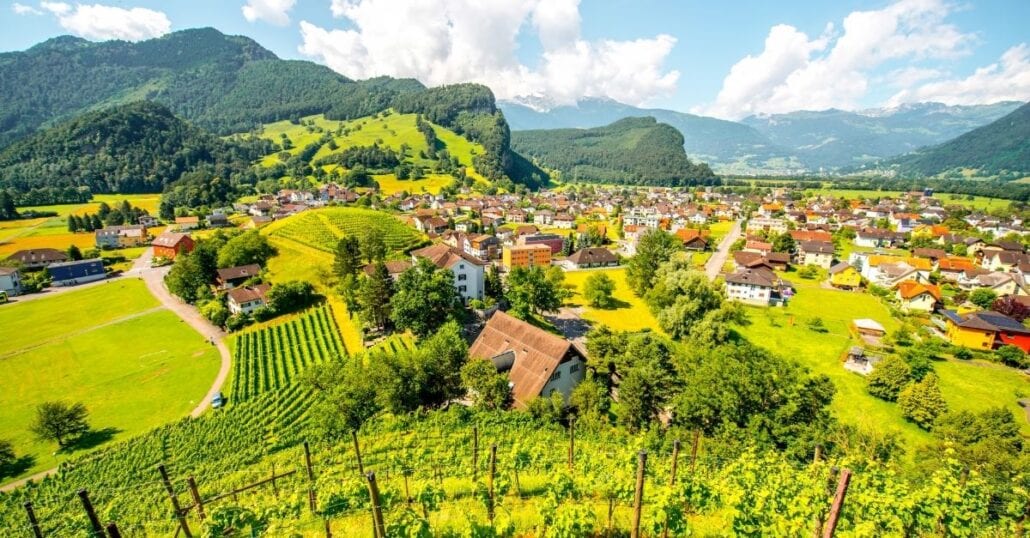
The Principality of Liechtenstein is one of the smallest countries in Europe and the sixth smallest country in the world. Located between Switzerland and Austria, this German-speaking country has a population of over 35,000 people, and it’s well known for its medieval castles, it’s hiking trails, rich wildlife and mountainous alpine landscapes.
Home to the rugged foothills of the Rhätikon Mountains, part of the central Alps, tiny Liechtenstein is also a top travel destination in Europe for winter sports. The winter activities revolve mainly around alpine skiing and the perfect spot for it in Liechtenstein is the mountain village of Malbun, placed at 1600m altitude.
When to go to Liechtenstein? If you’re a fan of winter sports, go should go in December or January. For hiking in the Alps, go during the summer.
What to do in Liechtenstein for free? Walk around the quiet capital Vaduz and visit the Liechtenstein Museums for free.
5. Andorra
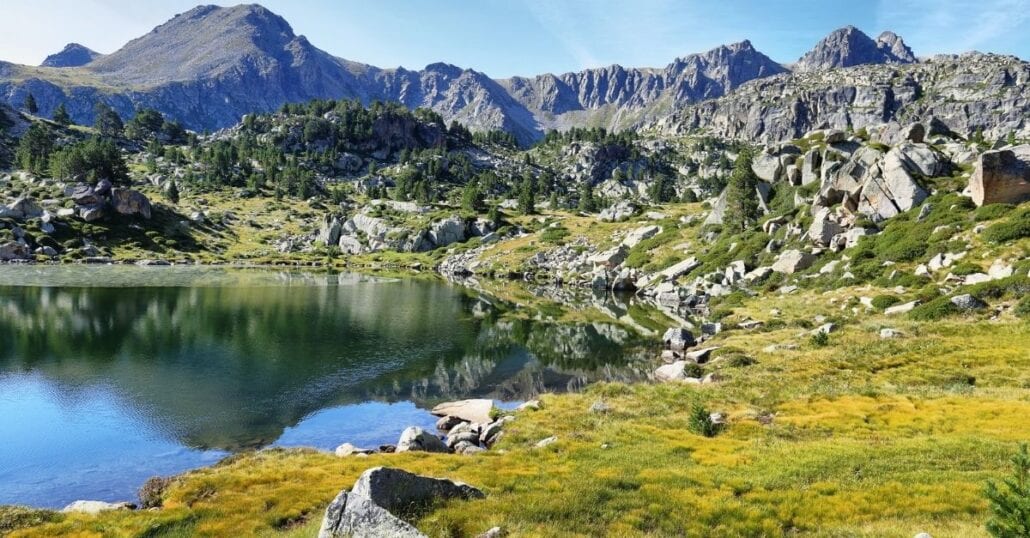
Lying in the eastern Pyrenees and bordered by Spain and France, Andorra is the 5th smallest country in Europe, with an area of 181 sq mi, and the 11th smallest in the world by population. This tiny independent principality is well known for its top ski resorts, such as Pas de la Casa and Grau Roig, El Tarter, and La Massana.
Andorra is also the world’s only co-principality, having two princes who jointly share the title: one is Emmanuel Macron, the President of France, and the other is the Joan Enric Vives Sicília, the Bishop of Urgell.
When to go to Andorra? Unless you want to go skiing (the ski season in December and ends in April), the best time to visit Andorra is from May to September.
What to do in Andorra for free? You can go hiking! It is a unique experience with breathtaking views of the Pyrenees.
6. The Republic of Malta
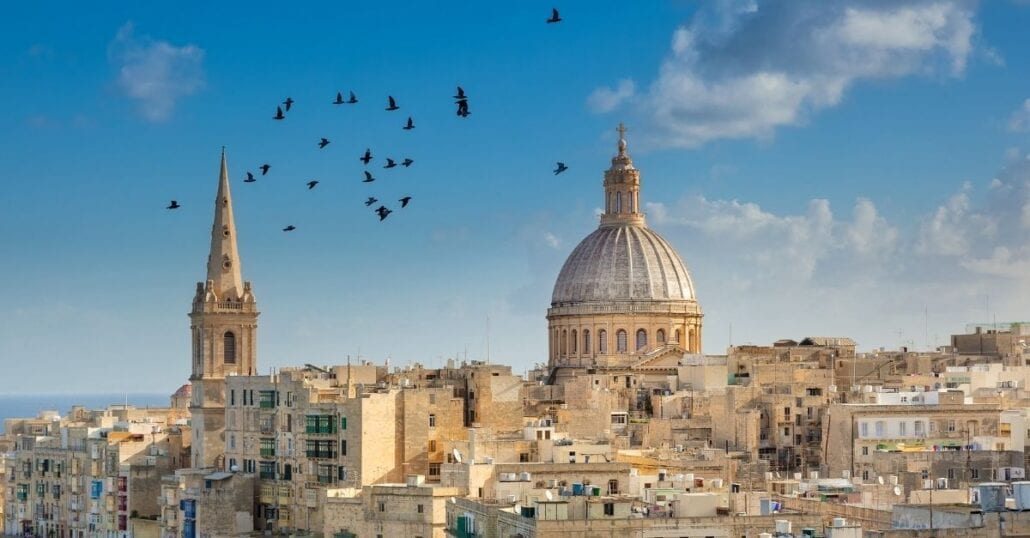
The Republic of Malta is a small island country that sits in the very middle of the Mediterranean Sea, between Sicily and the North African Coast. With an area of 122 sq mi and a population of 446,000, this ministate is an archipelago which consists of three main islands: Malta, Gozo and Comino.
With 7,000 years of history, Malta is home to several prehistoric sites, including the Ġgantija megalithic temple complex, and the Hypogeum, a labyrinth of Neolithic underground chambers located in Paola.
Aside from being one of the tiniest countries in Europe, Malta has pleasant Mediterranean weather, with hot summers and short cool winters, which creates the perfect environment for outdoor activities.
When to go to Malta? Go to Malta in October to avoid the crowds.
What to do in Malta for free? Lay on the beach in Fomm ir-Riħ and walk the Valetta coastline from a group of boathouses to the city walls and bastions of Fort St. Elmo.
7. Luxembourg
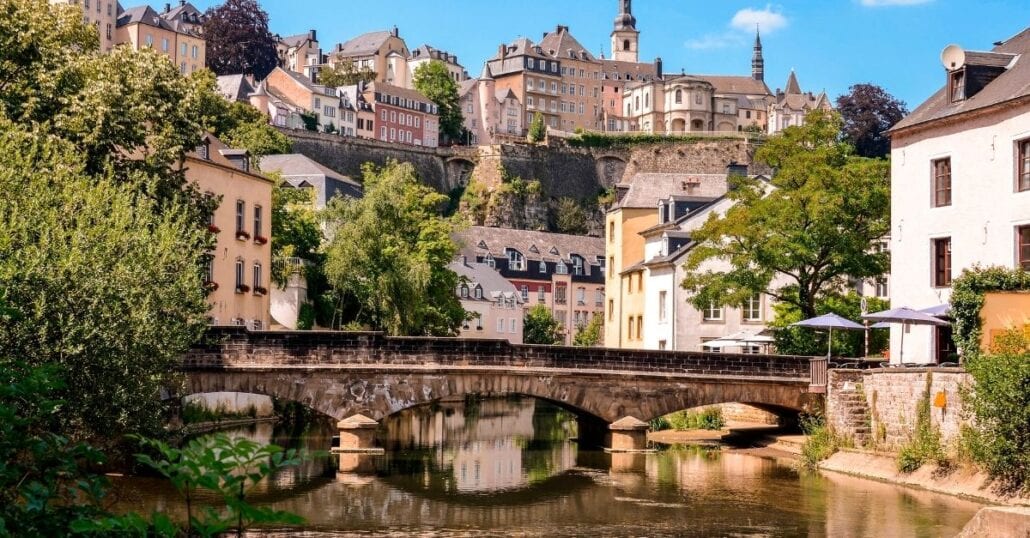
Officially the Grand Duchy of Luxembourg, Luxembourg is a small European country bordered by Belgium, France and Germany. With 998 sq mi, Luxembourg is slightly smaller than the U.S. state of Rhode Island. The country is also one of the least-populous in Europe, being home to 626,108 citizens (100.000 of them live in Luxembourg-City, which is the capital).
But even though Luxembourg is one of the tiniest countries – you can drive from North to South in 2 hours- it’s a charming destination, which you can easily explore during a holiday in Europe. The country’s landscape is mostly rural, with many hilly and forested regions. In case you want to uncover the more urban parts of Luxembourg, include a visit to Luxembourg-City to your bucket list. A UNESCO World Heritage Site, the capital is a fortified medieval old town filled with castles and fortifications.
When to go to Luxembourg? To experience great warm weather, visit Luxemburg between May and August, which are the driest, sunniest months, with a temperature average of 23ºC.
What to do in Luxembourg for free? Go to the Notre Dame Cathedral, a Jesuit church in Luxembourg City, and visit the Neumünster Abbey, also in the city capital.
8. Cyprus
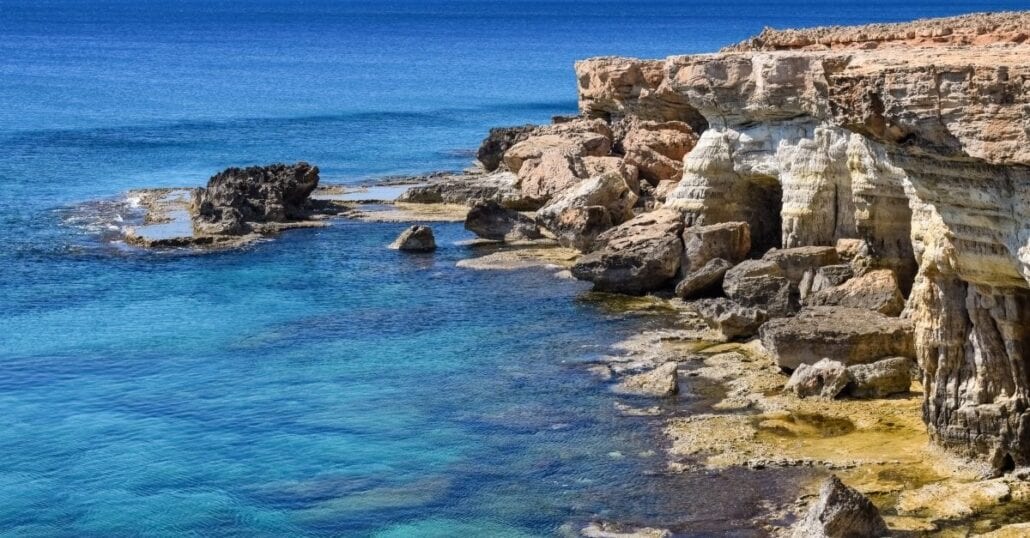
With an area of 3,572 sq mi, The Republic of Cyprus is the 34th tiniest country in the world. Cyprus is an island country in the Eastern Mediterranean, located south of Turkey and north of Egypt, and it was once described as the “golden-green leaf thrown into the Sea” by Greek Cypriot poet Leonidas Malenis. That’s because the country is an idyllic paradise, with a 400-mile coastline and long sandy beaches. In fact, many of the local beaches are Blue Flag-awarded, meaning they’re recognized for having environmental quality and water cleanliness. So make sure to include on your travel list trips to beaches such as the Coral Bay, Makronissos Beach and Fig Tree Bay.
When to go to Cyprus? Cyprus is home to some of the most beautiful beaches in the world. Therefore, the best time to visit the island is in the summer.
What to do in Cyprus for free? Soak up the sun on the beach, and take a forest trail.
9. Kosovo
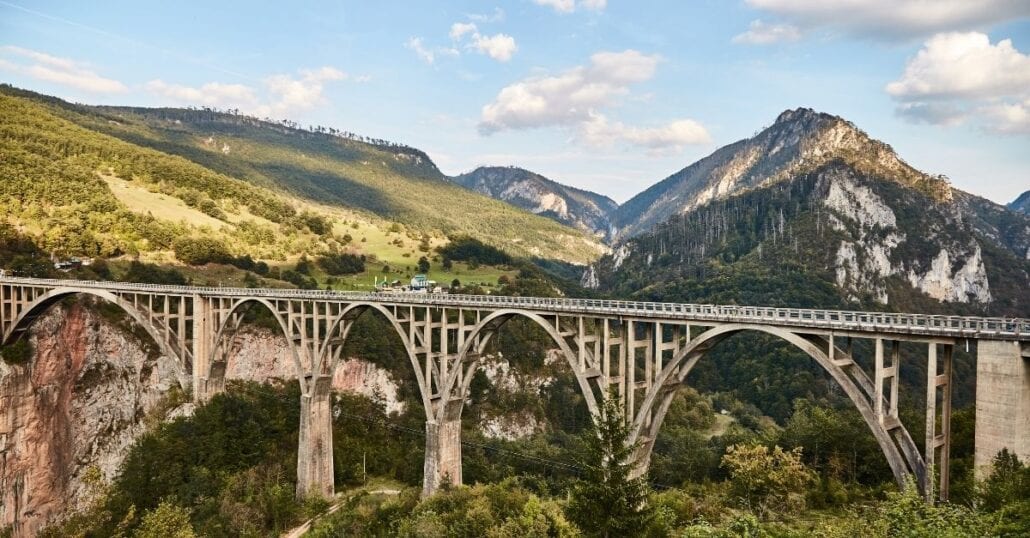
Kosovo is a self-declared independent country in the Balkans, Southeastern Europe, bordered by Servia, Macedonia, Macedonia and Montenegro. Even though Kosovo has a land area of only 4,203 sq mi, the country is covered by verdant countryside, home to an abundance of botanical special. Forests, by the way, represent about two-fifths of the Kosovo land, and they’re mostly populated by oak trees and pines. There are also more than 200 species of birds living and migrating seasonally to Kosovo. This basically means that Kosovo is a top place for adventure-filled vacations, with plenty of outdoor activities such as hiking.
When to go to Kosovo? For mild and pleasant temperatures, visit Kosovo between April to September. That what, you’ll be able to enjoy the best outdoor activities the country has to offer.
What to do in Kosovo for free? Explore the country’s verdant countryside, and go to Kosovo’s capital, Pristina.
10. Montenegro
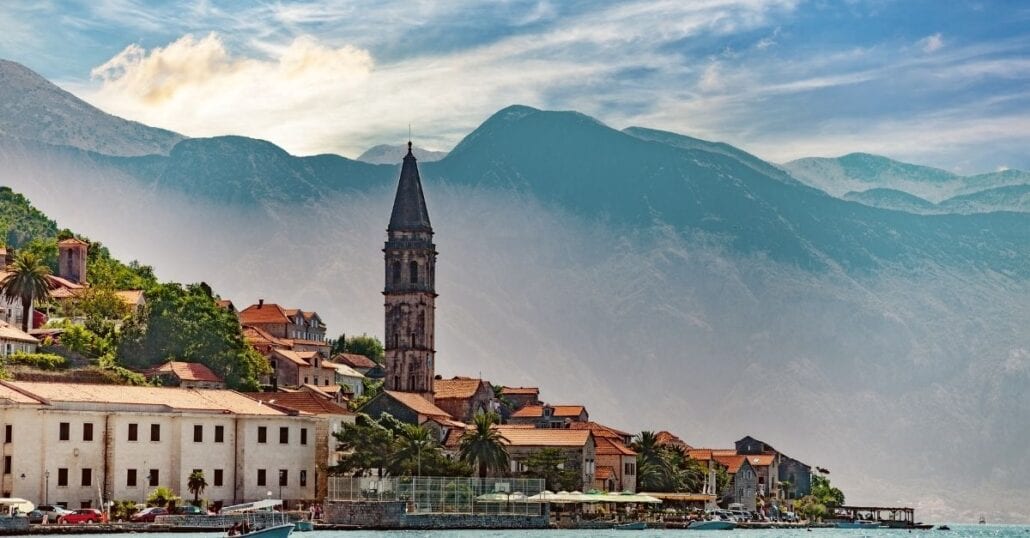
Montenegro is a Balkan country that borders Serbia, Kosovo, Croatia, Albania, and Bosnia and Herzegovina. With 5,332 sq mi, Montenegro has a dramatic natural landscape coloured by three main shades: blue, emerald green and iron-grey. Montenegro is bathed by the Adriatic sea and it has 117 beaches, a 293 km-length sea cost, 240 sunny days during the year, and several world-class national parks. Because of that, it’s a great destination for nature enthusiasts in Europe.
When to go to Montenegro? To make the most out of your experience, try to go to the country between April and October, at the end of spring and the beginning of autumn. Friendly reminder: during the summer the beaches get overcrowded with tourists, so a good idea is to head to the mountains.
What to do in Montenegro for free? Explore some of it’s National Parks, like Durmitor, Biogradska gora, Skadarsko jezero, Lovćen, and Prokletije.
Are you ready to go? Share this post on Pinterest:




Browse. Book. Stay.
CuddlyNest provides all accommodations to all travelers at the best price. Find unlimited travel inspiration on our blog and social media channels.
Here are some curated readings for you:
The New 7 Wonders of The World
Best Summer Tradition Festivals
Weirdest European Drinks
Fun Facts about Mexico
